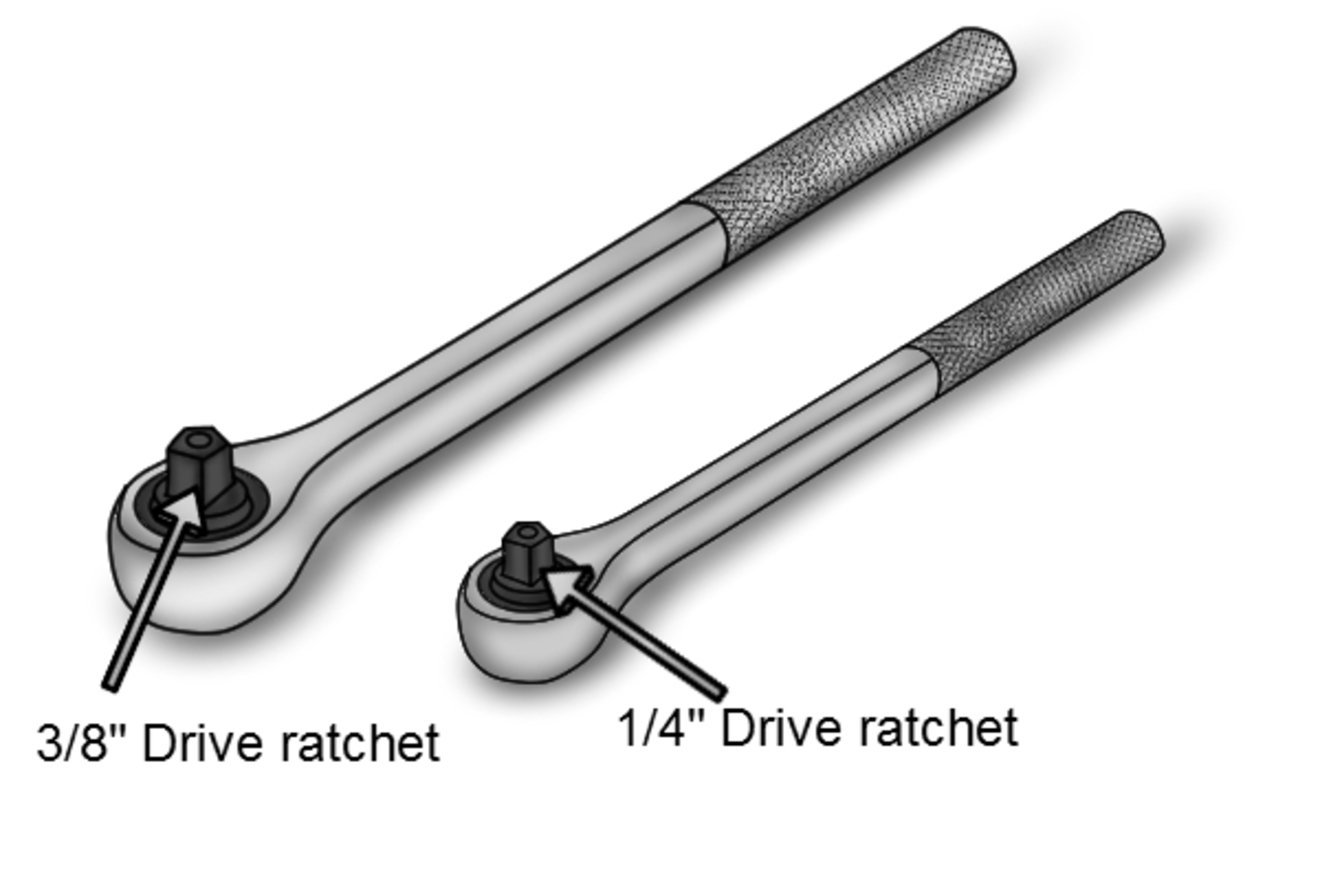Choosing a ratchet
I'm probably writing about the The Video Course - check it out!
The click of a ratchet wrench is the defining sound of a mechanic. Ratchets and sockets are extremely useful and versatile tools for the garage - in this article we explain how a ratchet works and what to look for when choosing one.
A ratchet spanner is used to tighten and loosen nuts and bolts. The ratchet mechanism lets it exert undo the nut only in one direction - meaning that you can quickly undo or tighten nuts without having to constantly lift the ratchet off, as you would with a traditional spanner.
Drive sizes

All ratchets accept sockets using a square drive and mostly there are three sizes of drive. Everywhere in the world these sizes are given in inches - even when the sockets are metric.
- 1/4 inch - Used for smaller sockets and precision work. Useful for dismantling individual components on the bench.
- 3/8 inch - The middle sized, and in my opinion, most useful size for general use on a car. A 3/8" drive can drive sockets of all sizes. It is big enough to apply quite a lot of force, but not too big to fit into tight spaces
- 1/2 inch - 1/2" sockets are generally used for nuts and bolts from around 10mm and up. A 1/2" drive socket can apply enough force to undo all nuts on a car.
- There are also 3/4" and 1" ratchets but these are used on trucks, tanks and industrial machinery.
Tooth count
Inside a ratchet there is a toothed wheel which lets it freely rotate as you tighten the nut. Each click you hear is a tooth passing the ratchet. The more teeth there are, the less movement is needed on the return stroke. A ratchet with 75 teeth will work considerably faster than a 32-tooth ratchet. Making high tooth-counts requires quality engineering and manufacturing, so as a general guide the better quality tools will have a higher tooth count.
Socket release
Sockets are held onto the ratchet using a little spring-loaded ball on the side of the square drive. After applying a lot of force, I've often found sockets get stuck on the drive and the only way to get them off is to hammer the ratchet on the floor or even grip it in a vice. Good quality ratchets include a button on the back which smoothly pushes off the socket when you are ready to release it.
Choosing yours
More than any other tool, a ratchet will last you a lifetime. Quality ratchets can be serviced inexpensively and so should never wear out. Sockets are interchangeable because they are all standard. Buy the best ratchet you can afford, even if you buy inexpensive sockets to start with. My go-to ratchet was made in the 1960s and inherited from a family friend. I still use it every day.
Related
Studio3: Bigger and better
I finished 14 hours of automotive engineering videos for the video course back in October. It's been a hectic few months and I'm finally ready to share some pretty exciting news: I've moved the video production to the UK. To Manchester, to be precise. And I'm building a proper studio where we can be more productive, more creative and shoot in even better quality. Read more
Why I chose an MX5 Miata for the video series
I've had quite a few questions from people about why I chose to use an MX5 Miata for the video series. Was it sponsored? Am I an expert with them? Because I love them? The answer is... it just seemed the best choice at the time. Now, with hindsight, I realise it was the best possible choice in the world. Here's the story... Read more
Course progress: March 2019
We've been filming and releasing videos every week since getting into the new studio. The course now has 9.5 hours of pro-quality video, fully subtitled and I'm really proud of what we're producing! We're using CGI anywhere it helps understanding, and the general quality and feel of the videos is at an all-time high. Read more